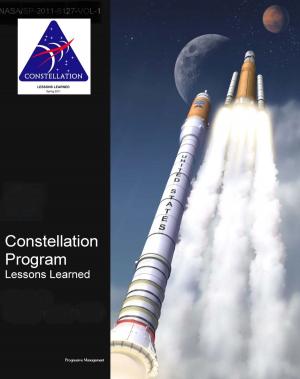Secret Weapon: High-value Target Teams as an Organizational Innovation - Iraq, Afghanistan, Taliban, al-Qaeda, Petraeus, Odierno, The Surge in Iraq, SOF, Tommy Franks, Task Force Freedom in Mosul
Nonfiction, History, Military| Author: | Progressive Management | ISBN: | 9781310293603 |
| Publisher: | Progressive Management | Publication: | November 26, 2014 |
| Imprint: | Smashwords Edition | Language: | English |
| Author: | Progressive Management |
| ISBN: | 9781310293603 |
| Publisher: | Progressive Management |
| Publication: | November 26, 2014 |
| Imprint: | Smashwords Edition |
| Language: | English |
This study argues that interagency teams were a major catalyst in turning around the Iraq War, and that they will disappear from America's arsenal unless the knowledge base supporting the innovation can be secured. Most explanations credit the dramatic reduction in violence in Iraq between 2007 and 2008 to new U.S. leadership, the surge in U.S. forces, and/or U.S. financial support to Sunni tribal leaders. In contrast, we argue that the United States employed an underappreciated organizational innovation—interagency teams—to put insurgent clandestine organizations on the defensive and give population security measures a chance to take effect.
By the end of 2004, Special Operations Forces (SOF) were using interagency high-value target teams in Iraq that were tactically successful—even awe-inspiring—but they were not making a strategic difference. They would hit a cell and it would reconstitute, and sometimes inadvertent collateral damage would occur that alienated the local population. Meanwhile, Army commanders in Mosul, Tal Afar, and Ramadi demonstrated that the insurgency could be beaten with organizations and tactics capable of conducting classic counterinsurgency warfare. They targeted insurgents and terrorists with sufficient discrimination to put them on the defensive, while population-centric security measures and influence operations pacified the broader population. The SOF and Army commanders used a kind of collaborative warfare that involved three separate innovations, each of which required interagency collaboration and all of which ultimately had to merge into a unified approach.
The first innovation was network-based targeting. This meant charting the clandestine terrorist and insurgent cells and their immediate supporters in order to attack them, but also using all-source intelligence to reveal the local environment, its social networks, and key decisionmakers and their motivations. The second innovation was the fusion of improved all-source intelligence with operational capability. Having intelligence and operations working together in common space on a sustained basis produced persistent surveillance, improved discrimination, and better decisionmaking. The third innovation was the integration of counterterrorist and counterinsurgency efforts and the proliferation of this model. All three innovations—net-worked-based targeting, fusion of intelligence and operations, and counterterrorist-counterinsurgency integration—required unprecedented collaboration between diverse departments and agencies and between SOF and conventional forces. Together, these innovations set the stage for the dramatic reversal of the security situation in Iraq in 2007.
Executive Summary * Introduction * Interagency Coordination and Cross-functional Teams * Experimentation with Cross-functional Teams in Afghanistan * Top-down Emphasis on Interagency Teams in Iraq * Bottom-up Experimentation with Interagency Teams in Iraq * Key Variables in Interagency High-value Target Team Performance * Interagency High-value Target Teams During and After the Surge * Decline and Atrophy * Observations * Conclusion * Notes
This study argues that interagency teams were a major catalyst in turning around the Iraq War, and that they will disappear from America's arsenal unless the knowledge base supporting the innovation can be secured. Most explanations credit the dramatic reduction in violence in Iraq between 2007 and 2008 to new U.S. leadership, the surge in U.S. forces, and/or U.S. financial support to Sunni tribal leaders. In contrast, we argue that the United States employed an underappreciated organizational innovation—interagency teams—to put insurgent clandestine organizations on the defensive and give population security measures a chance to take effect.
By the end of 2004, Special Operations Forces (SOF) were using interagency high-value target teams in Iraq that were tactically successful—even awe-inspiring—but they were not making a strategic difference. They would hit a cell and it would reconstitute, and sometimes inadvertent collateral damage would occur that alienated the local population. Meanwhile, Army commanders in Mosul, Tal Afar, and Ramadi demonstrated that the insurgency could be beaten with organizations and tactics capable of conducting classic counterinsurgency warfare. They targeted insurgents and terrorists with sufficient discrimination to put them on the defensive, while population-centric security measures and influence operations pacified the broader population. The SOF and Army commanders used a kind of collaborative warfare that involved three separate innovations, each of which required interagency collaboration and all of which ultimately had to merge into a unified approach.
The first innovation was network-based targeting. This meant charting the clandestine terrorist and insurgent cells and their immediate supporters in order to attack them, but also using all-source intelligence to reveal the local environment, its social networks, and key decisionmakers and their motivations. The second innovation was the fusion of improved all-source intelligence with operational capability. Having intelligence and operations working together in common space on a sustained basis produced persistent surveillance, improved discrimination, and better decisionmaking. The third innovation was the integration of counterterrorist and counterinsurgency efforts and the proliferation of this model. All three innovations—net-worked-based targeting, fusion of intelligence and operations, and counterterrorist-counterinsurgency integration—required unprecedented collaboration between diverse departments and agencies and between SOF and conventional forces. Together, these innovations set the stage for the dramatic reversal of the security situation in Iraq in 2007.
Executive Summary * Introduction * Interagency Coordination and Cross-functional Teams * Experimentation with Cross-functional Teams in Afghanistan * Top-down Emphasis on Interagency Teams in Iraq * Bottom-up Experimentation with Interagency Teams in Iraq * Key Variables in Interagency High-value Target Team Performance * Interagency High-value Target Teams During and After the Surge * Decline and Atrophy * Observations * Conclusion * Notes















